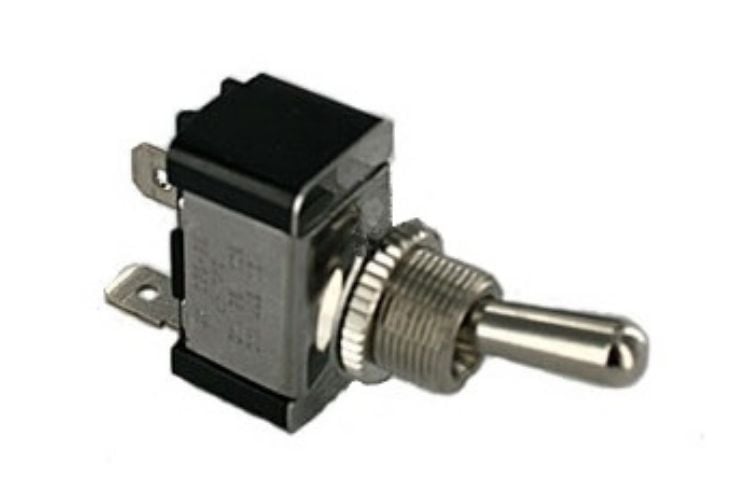
It would be highly inappropriate to have to stand at a light switch to keep it switched on so a latching switch is far more suitable. Latching switches are used for lower risk applications and where it would be highly inconvenient for the operator to have to manually apply pressure to keep the switch on. Momentary switches are used on heavy duty roller doors the operator must old down the switch when the door is opening or closing, if there are any obstructions to the doorway, the operator can quickly stop the door from closing preventing an accident. If it is not safe to leave the device on then it is safer for an operator to have to compress the switch so that the device cannot be left unattended. A toggle switch can also be a momentary switch, if it is spring-loaded to a certain position, or it may be a maintained contact toggle switch if it will. One of the main reasons for choosing a momentary switch will be for operator safety. The application in question will determine which type of switch is best suited. Operators of telephones use the switch to answer the phone and the line will remain open as long as the switch is pressed down. We also provide momentary switches for “press to talk” applications. The patient can move the bed to the desired position but they must keep their finger on the button for the bed to move.

Our momentary switches are used within the medical industry on the hand or foot control for hospital beds. Several families of heavy-duty toggle switches are available, as well as a high-temperature snap-in toggle switch series. They offer a variety of nylon and metal toggle styles, as well as illuminated toggles. For example a door buzzer or an electric drill. Carling bushing mount toggle switches range from 1 to 4 poles, 1 to 20 amps. Once the pressure is removed they will switch off. They will switch on when the user compresses the switch and will remain on only for as long as there is pressure on the switch. Momentary switches require continuous compression. Our latching switches are used within different industries for tattoo machines, and spa operations.

In this configuration, the LED will turn on when the relay is in its set condition and off when the relay is reset. Since the relay is latching, it won't draw much current most of the time. It's not really picky about how long you hold down the button. Latching switches can be found in the home and are used for things like light switches, central heating switches or on stereos. Pressing the momentary switch toggles the state of the relay and the LED.

They do not require continuous compression from the user. Latching switches are switched on by the user and then remain on until switched off again. Many of our switches come with both latching and momentary options, the difference between these two switch configurations is discussed below. What is the difference between latching and momentary switches?
#MOMENTARY TOGGLE SWITCH PLUS#
Supplies and solutions for every industry, plus easy ordering, fast delivery and 24/7 customer support. Latching switches and momentary switches operate in different ways and therefore suit different applications. When it comes to Momentary On/Off/Momentary On Toggle Switches, you can count on Grainger.


 0 kommentar(er)
0 kommentar(er)
